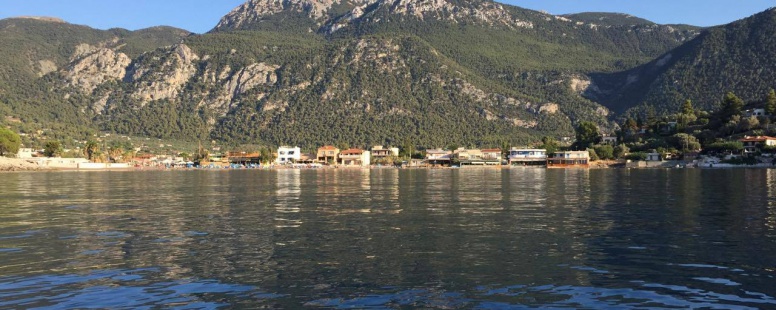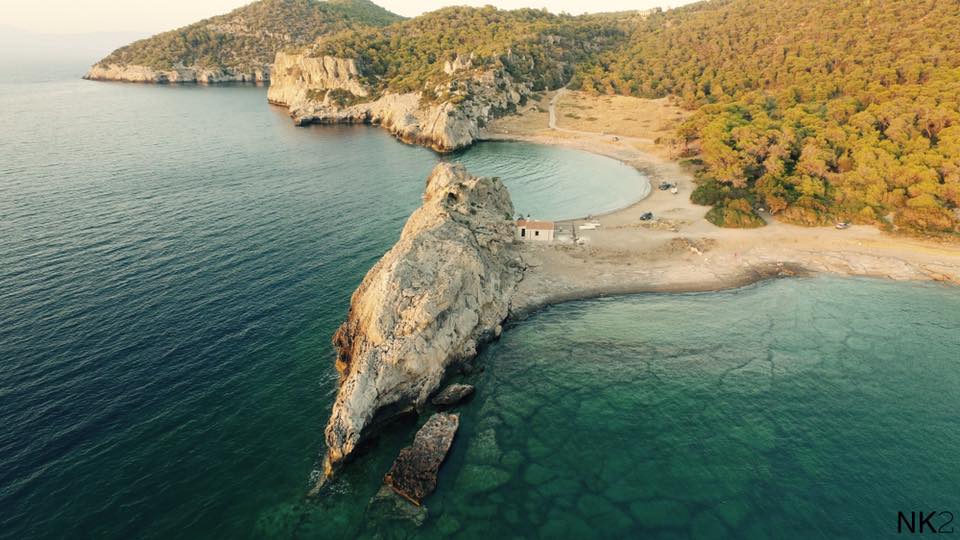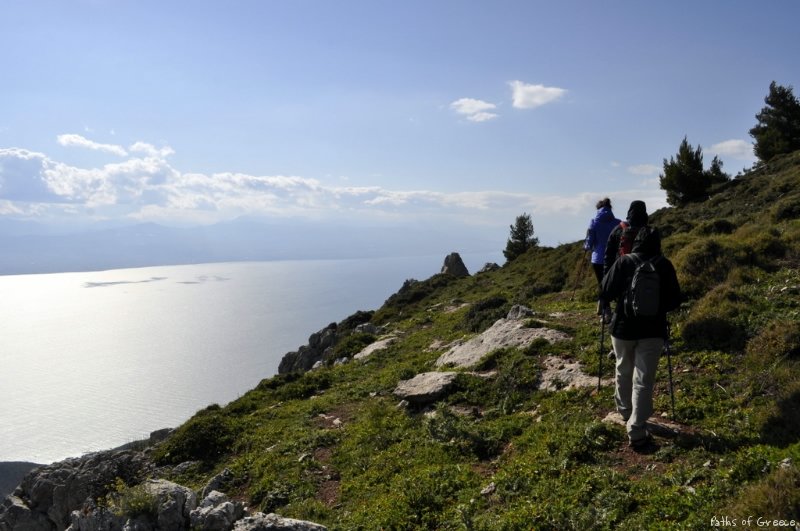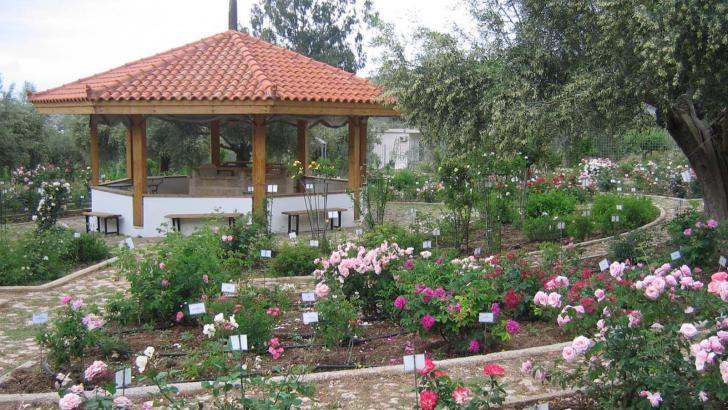AROUND LOUTRAKI: SCHINOS VILLAGE
Schinos. A beautiful, small, coastal, holiday village, around 30-40 minutes away from Loutraki. Its scenery is a wonderfully strange combination of scenery with gray-red gravel and green pines reaching almost the waves, could comfortably star in an old film where the heroes go there for isolation from indiscreet eyes, in a tavern with checkered tablecloths, pots and a table on the sand.

The visitor going from Loutraki to Schinos can reach many beautiful beaches of the area with crystal clear waters. Starting from Mavrolimni to Mylokopi with many options for every taste.

Also, one can enjoy trekking on secured paths from the Loutraki Mountains Climbing Club in the gorges of Gerakina & Mylos of Manolis on the limits in our prefecture with Attica as well as a paragliding and wind surf enthusiasts.

A unique of its type in Greece, rosegarden has at its premises in Schinos Loutrakiou the “Damianos Foundation Hellenic Center”. Rose tree (Rododentron) is one of the best in the world and includes 700 varieties of rose, from the old to the most modern. From the roots of Knossos to the roses that Anakreon and Sappho praise in their poems, the roses of the Greek tradition, as well as roses from all parts of the world, Persia, India, China and other countries. Among them is the very rare Chinese variety R. Chinensis Viridiflora with green roses.

According to remnants found in the wider area, it is estimated that the town of Oinoe, known from various literary sources, was in the area of today’s Schinos. In the village stands the crossover temple of Metamorphosis, built in the 11th century.
On the way to Schinos, there are Pisia. The churches are also scattered there: in a natural cave there is a temple dedicated to Saint George, in which a statue of Saint George, dating back to 1400, is preserved in the icon screen.
The church of Agios Athanasios, built in the 15th century, which brings interesting wall paintings of 1638, works by the monk Seraphim Koulouri.
Finally, the church of Agia Paraskevi, the metropolis of Pisia, which belongs to the rhythm of the three-aisled basilica and which was first built in the 18th century.


